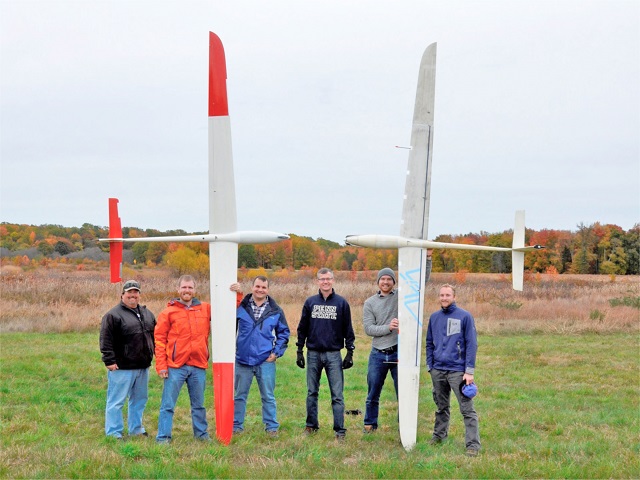The US military could be edging closer to fielding swarms of lightweight sailplanes for gathering intelligence or relaying signals, after validating autonomous soaring algorithms coded by the Naval Research Laboratory (NRL) and Pennsylvania State University.
The navy has long since demonstrated autonomous sailing using its in-house “autonomous locator of thermals" (ALOFT) algorithm, which seeks out and exploits pockets of rising warm air to create lift.
This latest effort, conducted over nine days in September and October, demonstrated a proof of concept where multiple sailplanes share their telemetry data to find the most efficient flight path and manoeuvre together like a flock of birds.
This “cooperative autonomous soaring” technique generates a more complete measurement of local atmospheric conditions, says Dan Edwards, the navy’s principle investigator for solar-soaring programmes.
“This atmospheric map is then integrated to guide both aircraft toward strong lift activity quicker than if it was just a single aircraft, a technique very similar to that used by a flock of soaring birds,” he says in a recent statement.
One of the two sailplanes above the Army's Aberdeen Proving Grounds in Maryland

US Navy/Pennsylvania State University
The NRL and Penn State sailplanes have small electric motors but not enough battery capacity to sustain long flights. By using ALOFT software and the additional atmospheric mapping and collision avoidance capabilities of Penn State’s AutoSOAR, the two research institutes' sailplanes achieved flight times of 5.3h and 2.5h respectively while achieving climbs of 1,000m (3,280ft).
The ultimate goal, NRL says, is to incorporate these algorithms into solar-powered UAVs for around-the-clock, overnight intelligence, surveillance and reconnaissance missions.
"This testing showed proof of concept on multiple occasions, with both aircraft finding thermals and calling the other aircraft over to use the same area of lift to increase endurance of the swarm,” says Edwards.
The navy has previously considered using ALOFT to extend the flight duration of its hydrogen-powered Ion Tiger unmanned demonstrator but it could support any “existing or future” UAV equipped with the right sensors.
Teams from NRL and Penn State Air Vehicle Intelligence and Autonomy (AVIA) Lab

US Navy/Pennsylvania State University
Source: FlightGlobal.com
















